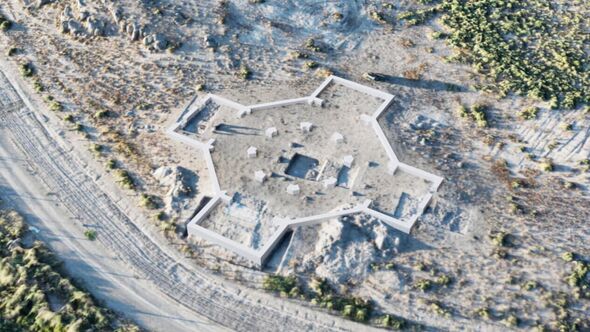The remains of an Armenian church dating back almost 2,000 years have been discovered by archaeologists, making it the oldest structure of its kind in the country and one of the oldest in the world.
The team, made up of Germany’s University of Munster, partnered with a team at the Armenian Academy of Sciences, called it “a sensational testimony” to early Christianity in the country.
They uncovered the building during excavations in Artaxata, a once-thriving metropolis and commercial centre which served as the capital of the ancient Armenian kingdom for nearly six centuries. It is located near the modern-day city of Artashat.
Experts believe the church was originally built in the fourth century AD, coinciding with the construction of the Etchmiadzin Cathedral, also in Armenia, which is considered the ancient kingdom’s first cathedral and is often regarded as the oldest cathedral in the world, according to CBS News.
Armenia, officially the Republic of Armenia, is a landlocked country found in West Asia. It is bordered by Turkey to the west, Georgia to the north, Azerbaijan to the east and Iran and the exclave of Nakhchivan to the south.
“The building, which dates back to the 4th century, is the oldest archaeologically documented church in the country — a sensational testimony to early Christianity in Armenia,” Achim Lichtenberger, a professor at the University of Münster who works on the archaeology project in Artaxata, said in a statement.
Excavations were part of the Armenian-German Artaxata Project, an initiative which began in 2018 to study the area.
Mkrtich Zardaryan of the Armenian Academy of Sciences separately noted that the architecture may help researchers reveal something new about the country’s history. The church is shaped like an octagon, with rectangular chambers extending out from four of its sides.
It is the first octagonal church known to exist in Armenia, Zardaryan said, adding that churches of this shape typically appear in the eastern Mediterranean. It resembled early Christian memorial buildings, according to the University of Munster.
The ancient Armenian church measured about 30 metres across and originally had a mortar flooring, created mostly from sand and cement, with walls made from thick slabs of terracotta, which at the time was produced in places such as Greece and Italy.
Pieces of the original materia, including fragments of marble, found at the site suggest that the church was once lavishly decorated, with the terracotta likely imported from the Mediterranean.
Remains of wooden platforms found along with the clay helped researchers confirm the building’s origins through carbon dating, the university said.
According to tradition, Gregory the Illuminator converted the Armenian King Tiridates III to Christianity in Artaxata in 301 AD, which marked Armenia as the first Christian state in the world, a milestone that still resonates in the country’s religious and cultural history.
The nearby medieval monastery of Khor Virap, a well-known pilgrimage site, stands as a reminder of this heritage, situated close to the newly discovered church.
